Architecture in Medieval India
The Arab conquest of Sind started a chain of events which led to the conquering of Delhi by the 11th Century by an islamic ruler.
Local architects retained local elements as well and introduced elements from Persian architectural style to their creations. This style of architecture became known as the Indo - Islamic or the Indo Saracenic architecture. Calligraphy, ornamentation using inlay work were introduced to reflect the preferences of the new rulers.
Features of Indo Islamic architecture are :
Arcuate style o architecture replaced the Trabeat style as arches and domes were introduced.
Islamic rulers introduced minars around mosques and mausoleums.
Mortar was used as a cementing agent during construction
Avoided use of humans and animals figures during architecture.
Calligraphy became used more compared to previous architectures where sculptures were used.
Architecture style used geometry for decorative patterns. Arabesque style became popular - This used geometrical vegetal ornamentation.
Buildings had intricate "jaali" work which symbolised the importance of light in islamic traditions.
Importance of water also was seen in the construction. It was mainly used for decorative, cooling and religious purposes.
Islamic rulers introduced the technique of charbagh - a garden split into four parts, Pietra dura style of inlay work on stone walls and foresightening technique of creating inscriptions on walls such that they appear of the same size from all sides.
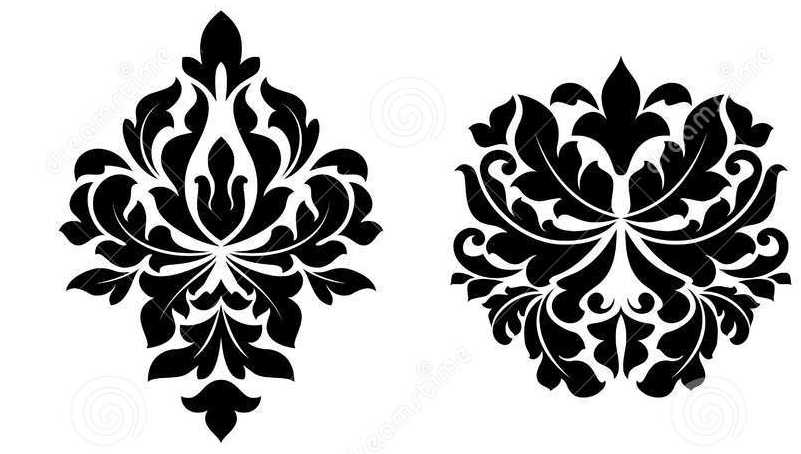
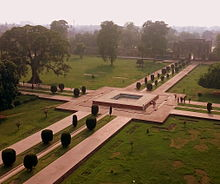
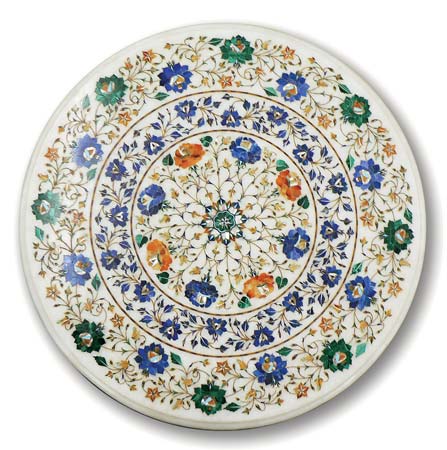
Difference between Trabeate style and Arcuate style
| Trabeate | Arcuate |
|---|---|
| Use of lintels | Use of arches and domes |
| Use of shikhar on top of temples which were conical or curvilinear | Use of domes on top of mosques |
| Minars were absent | Minars were seen on four sides of a mosque |
| Stone was the primary component of all constructions | Brick, lime plaster and mortar were used in constructions |
Delhi sultanate period
Architecture was either of imperial style i.e. patronised by rulers or provincial style i.e patronised by local rulers and fiefs.
Slave dynasty (Mameluke style) :
During this period, remodelling of existing Hindu structures. Qutb minar was an example of structures built during this period.
Khilji dynasty (Seljuk style) :
Red sandstone was used from this period. Arcuade style of architecture first emerged and mortar began to be used as cementing agent.
Tuglaq dynasty :
Construction work was less as it was the crisis period of architecture. Battar system of construction of walls was introduced where walls were sloping to give more strength to the building.
Lodi dynasty :
Only tombs were constructed however concept of double dome was introduced. Double domes gave strength to the structure and lowered the inner height of the building.
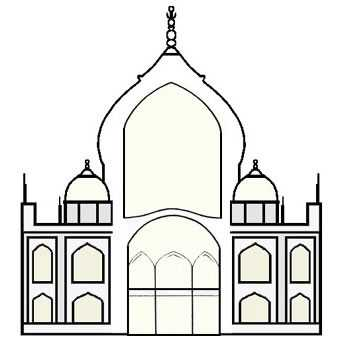
Bengal school - Provincial school of architecture during Medieval India
Used bricks and black marble for construction.
Mosques built had the sloping bangla roof seen in temples.
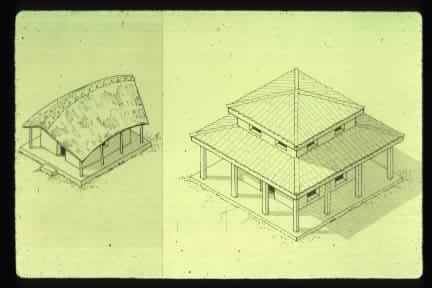
Sikh style architecture
It was heavily influenced by mughal architecture.
The use of multiple chhatris or kiosks on top of the construction
Use of shallow cornices, fluted domes covered by brass and copper guilds for decorations.
Arches were decorated for use of numerous foliations.
Rajput style of architecture
They undertook the building of imposing palaces and forts.
Building of hanging balconies and cornices shaped in an arch were unique features of this style.
It was also influenced by Mughal architecture.
Architecture in Modern India
Portugese influence led to iberian style of architecture. "Patio houses" and "baroque style churches" are features of the portugese style.
French influence led to introduction of modern city planning which had cartesian grid plans and scientific architectural designs. Anonymous architecture was a feature introduced by the French.
British influence led to creation of indo - gothic (victorian) or neo gothic architecture.
Iberian and Gothic style
| Iberian | Gothic |
|---|---|
| Wood was used for roofs and stairs. Bricks were the main material used for building. | Red sandstone and coarse limestone were used. |
| Portugese did not introduce indian influences in their architecture | British introduced indian influences in their architecture |